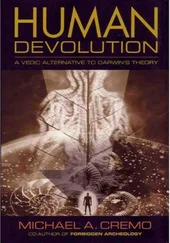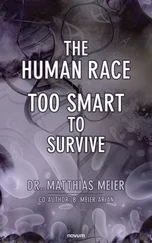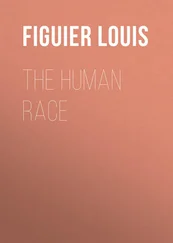Michael Cremo - Forbidden Archeology - The Hidden History of the Human Race
Здесь есть возможность читать онлайн «Michael Cremo - Forbidden Archeology - The Hidden History of the Human Race» весь текст электронной книги совершенно бесплатно (целиком полную версию без сокращений). В некоторых случаях можно слушать аудио, скачать через торрент в формате fb2 и присутствует краткое содержание. Год выпуска: 1992, ISBN: 1992, Издательство: Torchlight Publishing, Жанр: Старинная литература, на английском языке. Описание произведения, (предисловие) а так же отзывы посетителей доступны на портале библиотеки ЛибКат.
- Название:Forbidden Archeology: The Hidden History of the Human Race
- Автор:
- Издательство:Torchlight Publishing
- Жанр:
- Год:1992
- ISBN:9780892132942
- Рейтинг книги:4 / 5. Голосов: 1
-
Избранное:Добавить в избранное
- Отзывы:
-
Ваша оценка:
- 80
- 1
- 2
- 3
- 4
- 5
Forbidden Archeology: The Hidden History of the Human Race: краткое содержание, описание и аннотация
Предлагаем к чтению аннотацию, описание, краткое содержание или предисловие (зависит от того, что написал сам автор книги «Forbidden Archeology: The Hidden History of the Human Race»). Если вы не нашли необходимую информацию о книге — напишите в комментариях, мы постараемся отыскать её.
Forbidden Archeology: The Hidden History of the Human Race — читать онлайн бесплатно полную книгу (весь текст) целиком
Ниже представлен текст книги, разбитый по страницам. Система сохранения места последней прочитанной страницы, позволяет с удобством читать онлайн бесплатно книгу «Forbidden Archeology: The Hidden History of the Human Race», без необходимости каждый раз заново искать на чём Вы остановились. Поставьте закладку, и сможете в любой момент перейти на страницу, на которой закончили чтение.
Интервал:
Закладка:
In the early part of the twentieth century, some scientists advocated the view that the Neanderthals of the last glacial period, known as the classic Western European Neanderthals, were the direct ancestors of modern human beings. They had brains larger than those of Homo sapiens sapiens. Their faces and jaws were much larger, and their foreheads were lower, sloping back from behind large brow ridges. Neanderthal remains are found in Pleistocene deposits ranging from 30,000 to 150,000 years old. However, the discovery of early Homo sapiens in deposits far older than 150,000 years effectively removed the classic Western European Neanderthals from the direct line of descent leading from Homo erectus to modern humans.
The type of human known as Cro-Magnon appeared in Europe approximately 30,000 years ago (Gowlett 1984, p. 118), and they were anatomically modern. scientists used to say that anatomically modern Homo sapiens sapiens first appeared around 40,000 years ago, but now many authorities, in light of the Border cave discoveries in south Africa, say that they appeared around 100,000 years ago (Rightmire 1984, pp. 320–321).
The cranial capacity of modern humans varies from 1,000 cc to 2,000 cc, the average being around 1,350 cc. As can be readily observed today among modern humans, there is no correlation between brain size and intelligence. There are highly intelligent people with 1,000 cc brains and morons with 2,000 cc brains. exactly where, when, or how Australopithecus gave rise to Homo habilis,
or Homo habilis gave rise to Homo erectus, or Homo erectus gave rise to modern humans is not explained in present accounts of human origins. However, one thing paleoanthropologists do say is that only anatomically modern humans came to the new World. The earlier stages of evolution, from Australopithecus on up, are all said to have taken place in the Old World. The first arrival of human beings in the new World is generally said to have occurred some 12,000 years ago, with some scientists willing to grant a Late Pleistocene date of 25,000 years.
Even today there are many gaps in the presumed record of human descent. For example, there is an almost total absence of fossils linking the Miocene apes with the Pliocene ancestors of modern apes and ancestral humans, especially within the span of time between 4 and 8 million years ago.
Perhaps it is true that fossils will someday be found that fill in the gaps. Yet, and this is extremely important, there is no reason to suppose that the fossils that turn up will be supportive of evolutionary theory. What if, for example, fossils of anatomically modern humans turned up in strata older than those in which the dryopithecine apes were found? Even if anatomically modern humans were found to have lived contemporaneously with Dryopithecus (or even a million years ago, 4 million years after the late Miocene disappearance of Dryopithecus ), that would be enough to throw the current accounts of the origin of humankind completely out the window.
In fact, such evidence has already been found, but it has since been suppressed or conveniently forgotten. Much of it came to light immediately after Darwin published The Origin of Species , before which there had been no notable finds except Neanderthal man. In the first years of Darwinism, there was no clearly established story of human descent to be defended, and professional scientists made and reported many discoveries that now would never make it into the pages of any journal more academically respectable than the National Enquirer. Most of these fossils and artifacts were unearthed before the discovery by Eugene Dubois of Java man, the first protohuman hominid between Dryopithecus and modern humans.
Java man was found in Middle Pleistocene deposits generally given an age of 800,000 years. The discovery became a benchmark. Henceforth, scientists would not expect to find fossils or artifacts of anatomically modern humans in deposits of equal or greater age. If they did, they (or someone wiser) concluded that this was impossible and found some way to discredit the find as a mistake, an illusion, or a hoax. Before Java man, however, reputable nineteenth-century scientists found a number of examples of anatomically modern human skeletal remains in very ancient strata. And they also found large numbers of stone tools of various types, as well as animal bones bearing signs of human action.
1.9 Some Principles of Epistemology
Before beginning our survey of rejected and accepted paleoanthropological evidence, we shall outline a few epistemological rules that we have tried to follow. Epistemology is defined in Webster’s New World Dictionary (1978) as “the study or theory of the origin, nature, methods, and limits of knowledge.” When engaged in the study of scientific evidence, it is important to keep the “nature, methods, and limits of knowledge” in mind; otherwise one is prone to fall into a number of illusions.
One important illusion, sometimes called the illusion of “misplaced concreteness,” is that a scientific study deals directly with facts, and that scientific arguments appealing to the facts can prove statements about reality. For example, one might suppose that an argument involving facts in the form of fossil bones can prove that anatomically modern humans really did arise in Africa 100,000 years ago. Thinking this, one might strongly argue, on the basis of certain facts, that the statement “anatomically modern humans arose in Africa 100,000 years ago” represents the truth. If the facts are part of reality, and the arguments are sound, then surely the conclusion must be true. Or, at least, granting our human fallibility, we can be reasonably confident that it is true.
The problem here is that in the field of paleoanthropology the facts being considered are not directly part of reality. Indeed, if a “fact” is examined closely it is found to resolve into (1) arguments based on further “facts,” or (2) claims that someone has witnessed something at a particular time and place. Thus “facts” turn out to be networks of arguments and observational claims.
To some extent, this is true of the facts discussed in any field of science. But the facts of paleoanthropology have certain key limitations that should be pointed out. First, the observations that go into paleoanthropological facts tend to involve rare discoveries that cannot be duplicated at will. For example, some scientists in this field have built great reputations on the basis of a few famous discoveries, and others, the vast majority, have spent their whole careers without making a single significant find.
Second, once a discovery is made, key elements of the evidence are destroyed, and knowledge of these elements depends solely on the testimony of the discoverers. For example, one of the most important aspects of a fossil is its stratigraphic position. However, once the fossil is removed from the earth, the direct evidence indicating its position is destroyed, and we simply have to depend on the excavator’s testimony as to where he or she found it. Of course, one may argue that chemical or other features of the fossil may indicate its place of origin. This is true in some cases but not in others. And in making such judgements, we also have to depend on reports concerning the chemical and other physical properties of the strata in which the fossil was allegedly found.
Persons making important discoveries sometimes cannot find their way back to the sites of those discoveries. After a few years, the sites are almost inevitably destroyed, perhaps by erosion, by complete paleoanthropological excavation, or by commercial developments (involving quarrying, building construction, and so forth). Even modern excavations involving meticulous recording of details destroy the very evidence they are recording, and leave one with nothing but written testimony to back up many key assertions. And many important discoveries, even today, involve very scanty recording of key details.
Читать дальшеИнтервал:
Закладка:
Похожие книги на «Forbidden Archeology: The Hidden History of the Human Race»
Представляем Вашему вниманию похожие книги на «Forbidden Archeology: The Hidden History of the Human Race» списком для выбора. Мы отобрали схожую по названию и смыслу литературу в надежде предоставить читателям больше вариантов отыскать новые, интересные, ещё непрочитанные произведения.
Обсуждение, отзывы о книге «Forbidden Archeology: The Hidden History of the Human Race» и просто собственные мнения читателей. Оставьте ваши комментарии, напишите, что Вы думаете о произведении, его смысле или главных героях. Укажите что конкретно понравилось, а что нет, и почему Вы так считаете.












